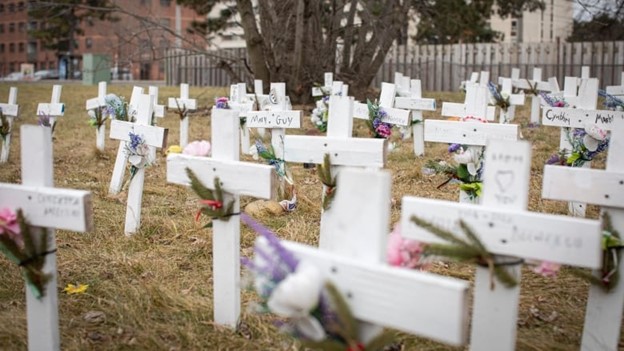Promised new national standards for long-term care homes in Canada have now been published — part of Ottawa’s attempt to avoid a repeat of the alarming death tolls in long-term care homes that marked the early phase of the pandemic.
The Health Standards Organization (HSO) published 60 pages of comprehensive standards Tuesday, to complement the release of 115 pages of standards from the Canadian Standards Association Group (CSA) in December. The federal government launched the standards project in the spring of 2021.
Both organizations were tasked with coming up with standards to improve the quality of care in long-term care (LTC) homes across the country. The HSO focused on the care itself and the CSA on the physical infrastructure.
While the new standards are voluntary, health experts say they won’t do the job unless LTC homes adopt all of them without exceptions.
“This is very much a kind of all-or-nothing thing. This is basically what the standard of care needs to be,” said Dr. Samir Sinha, director of geriatrics at Sinai Health and the University Health Network in Toronto and chair of the HSO technical committee that drafted the standards.
“My greatest fear is that if we don’t take these standards to heart and make sure that they are the basis of inspections, enforcements, quality improvements and accountability … I’m worried that these standards will just sit on the shelf.”
The pandemic exposed fatal weaknesses in the LTC sector. In the first few months of the pandemic, more than 80 percent of Canada’s known COVID-19 deaths happened in long-term care and retirement homes — the highest such rate among nations in the Organisation for Economic Co-operation and Development (OECD).
More than 17,000 residents of long-term care homes in Canada had died because of COVID-19 as of July 2022, according to the National Institute on Ageing.
Thousands of staff members in LTC facilities have been infected as well; more than 30 have died as a result. In some provinces, the Canadian Armed Forces had to be called in to help out at LTC homes.

Dr. Sinha said the standards rolled out today would have saved many lives had they been in force when COVID-19 hit.
“If these standards were in place before, I believe we would not be leading the world in having the worst performance in long-term care. I think, frankly, we would have been one of the best,” he said.
The two sets of standards are meant to complement each other. They go beyond pandemic preparedness and address everything from preventing falls and maintaining flexible meal schedules (some LTC residents went without meals during staff shortages over the course of the pandemic) to end-of-life-care and emergency plans for catastrophic events.

The new standards also directly address how COVID-19 affected the quality of long-term care. So they include recommendations for flexible visitor policies, for rules that balance LTC residents’ rights with the health and safety of others, and for maintaining social interaction with family even during public health emergencies — along with page after page of standards for infection prevention and control.
“These standards are first and foremost going to increase the quality of care for their residents, but it is also going to improve the business of care as well if these homes are showing that they’re making these improvements,” said Alex Mihailidis, a professor at the University of Toronto’s institute of biomedical engineering and chair of the CSA Group technical subcommittee that developed the infrastructure standards.
Read more…





